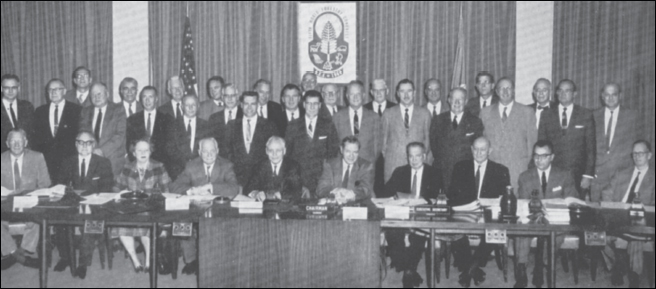Women in Unasylva before 1980: where were they?
Every Unasylva issue in recent years has included women authors, and many articles have addressed issues concerning women – who carry out much of the work in forestry, particularly in developing countries. Unasylva No. 146 (1984) was devoted to women in forestry. But not long before that, the journal’s name might well have stood for “one world – one forest – one gender”. Women authors didn’t appear in the pages of Unasylva until 1980.
Women are mentioned in 300 Unasylva articles; but only 40 of these were published before 1980. The nature of the references to women in these 40 articles is a reminder of how things used to be – and how much things have changed.
About half of the references to women were contained in the generic phrase “men and women” or “men, women and children”. But perhaps this was an early sign of progress, since the generic term “man” was then widely used, starting from the first page of the first Unasylva (“Forests were originally a huge reserve out of which each man could help himself”) and continuing in the same vein for decades.
There was the barest mention of work carried out by women. A few articles mentioned women’s organizations or associations. Two photo captions indicated timber carried “by a strong woman” in India (No. 82, 1966) and “Arab women tending an experimental dryland nursery” (No. 119-120, 1978). Surprisingly, only five articles before 1980 referred to the labour of women in collecting fuelwood or non-wood forest products (a common theme in later years). In an article on “New designs for fuelwood cooking stoves” (Vol. 15, No. 3, 1961), women (presumably the usual users of cooking stoves) are mentioned – but only once.
One article noted equipment used in mechanized tending as “physiologically unsuitable for women” (No. 90, 1968).
Other articles mentioned an English princess, the wife of a president and the wife of a retiring FAO Representative – or other roles tangential to forestry: Vol. 10, No. 4 (1956) described a controlled burn in the United States, where “98 men were on the firelines; 17 women prepared and delivered lunch and refreshments”. An article in No. 115 (1977) advised prospective trade fair exhibitors: “Women at a stand may be an asset, especially when in their country of origin trading is traditionally in the hands of women. Besides they are quite an attraction when wearing their national costumes.”
No. 83 noted that in 1966 the Forestry Division had only one fully qualified woman forester at headquarters (Miss L. Larcher-Graça of Portugal). Yet a contribution in No. 108 (1975) noted that in one of the largest plywood plants in the world, in the Republic of Korea, about half of the 5 500 employees involved in panel production were young women.
That leaves only four references to professional women in book reviews, and two articles genuinely about women in forestry: an announcement of a fellowship winner in 1962 (“Mrs. E.A. Artuz Philipps of the Forest Products Research Institute, Laguna, Philippines, has been awarded an André Mayer FAO Fellowship to conduct research on the relationship between fiber characteristics and pulp-sheet properties of Philippines hardwoods. She will work at Yale University, U.S.A.”); and a short news item in World of Forestry, No. 111 (1976), “Women’s work in Thai forests”, which asked “What kind of work and working conditions do women have in tropical forestry?”
| Outnumbered: the caption to this 1960 photo (from Vol. 14, No. 1) described the organizing committee for the fifth World Forestry Congress as “composed of men and women representing every phase of American forestry”. The evidence shows 35 men – and one woman. |
 |
|